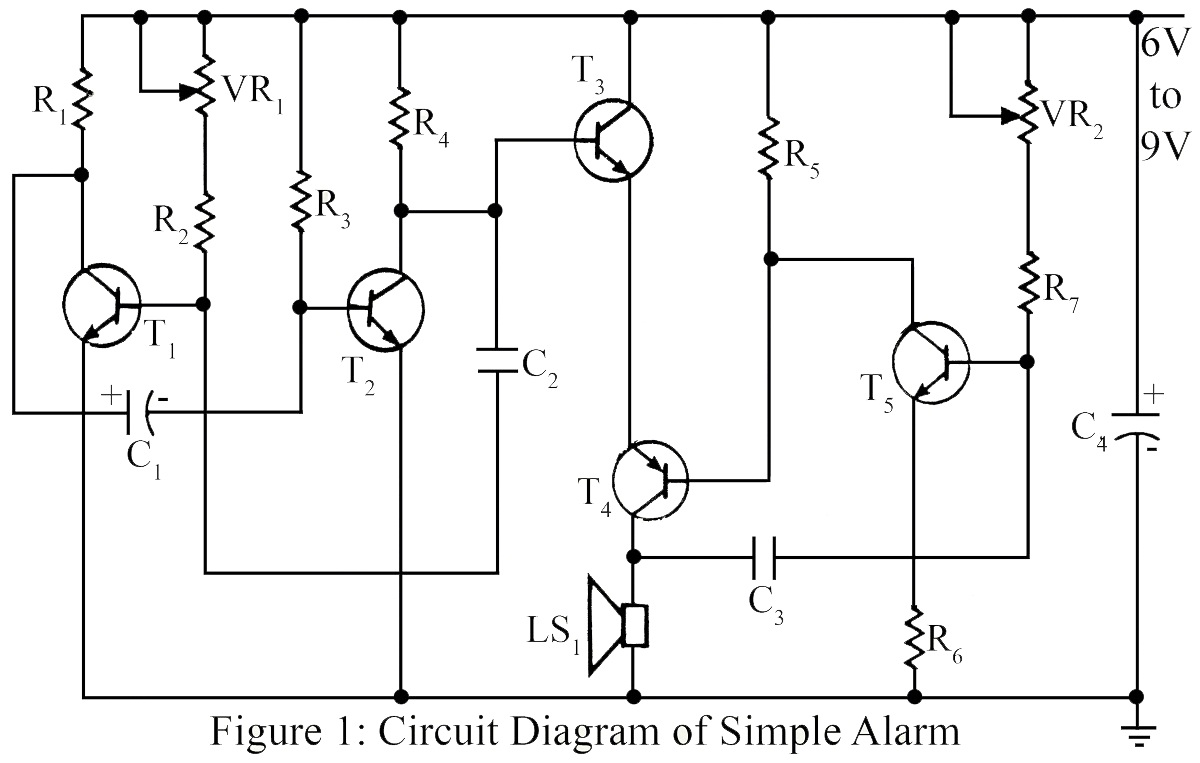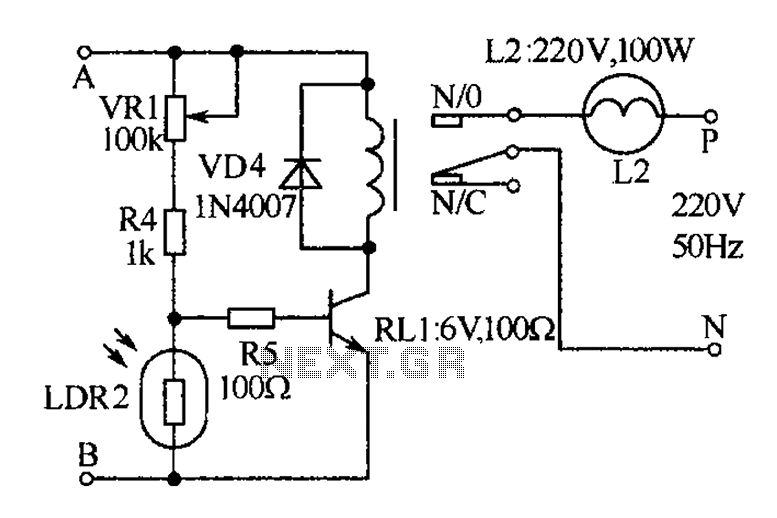
Simple Alarm Circuit

The simple circuit generates an audible alarm notification, functioning as a burglar alarm utilizing five transistors.
This circuit operates as a basic burglar alarm system designed to emit an audible sound when triggered. The core component of the circuit is a transistor-based oscillator, which generates a square wave signal. The five transistors are configured in a manner that allows for both signal amplification and control of the alarm's sound output.
The first stage of the circuit typically involves a pair of transistors configured as a multivibrator. This arrangement produces a continuous oscillation that creates a square wave. The frequency of the oscillation can be adjusted by varying the resistor and capacitor values in the circuit, thus allowing for customization of the alarm tone.
The output from the multivibrator is fed into additional transistors that serve as amplifiers. These transistors increase the current driving capability of the circuit, allowing it to activate a speaker or piezo buzzer effectively. The speaker, when powered by the amplified signal, produces the audible alarm sound that alerts individuals to the potential security breach.
To enhance functionality, the circuit may include a triggering mechanism, such as a motion sensor or a magnetic switch, which activates the alarm when unauthorized entry is detected. This triggering mechanism can be connected to the base of one of the transistors, ensuring that the oscillator circuit is powered only when the alarm is in a triggered state.
Overall, this simple transistor-based burglar alarm circuit is effective for basic security applications, providing an audible notification to deter intruders. Its straightforward design allows for easy assembly and modification, making it suitable for educational purposes or as a foundation for more complex alarm systems.The simple circuit produces simple audible alarm like notification of sound, used as burglar alarm using five transistor. 🔗 External reference
This circuit operates as a basic burglar alarm system designed to emit an audible sound when triggered. The core component of the circuit is a transistor-based oscillator, which generates a square wave signal. The five transistors are configured in a manner that allows for both signal amplification and control of the alarm's sound output.
The first stage of the circuit typically involves a pair of transistors configured as a multivibrator. This arrangement produces a continuous oscillation that creates a square wave. The frequency of the oscillation can be adjusted by varying the resistor and capacitor values in the circuit, thus allowing for customization of the alarm tone.
The output from the multivibrator is fed into additional transistors that serve as amplifiers. These transistors increase the current driving capability of the circuit, allowing it to activate a speaker or piezo buzzer effectively. The speaker, when powered by the amplified signal, produces the audible alarm sound that alerts individuals to the potential security breach.
To enhance functionality, the circuit may include a triggering mechanism, such as a motion sensor or a magnetic switch, which activates the alarm when unauthorized entry is detected. This triggering mechanism can be connected to the base of one of the transistors, ensuring that the oscillator circuit is powered only when the alarm is in a triggered state.
Overall, this simple transistor-based burglar alarm circuit is effective for basic security applications, providing an audible notification to deter intruders. Its straightforward design allows for easy assembly and modification, making it suitable for educational purposes or as a foundation for more complex alarm systems.The simple circuit produces simple audible alarm like notification of sound, used as burglar alarm using five transistor. 🔗 External reference





